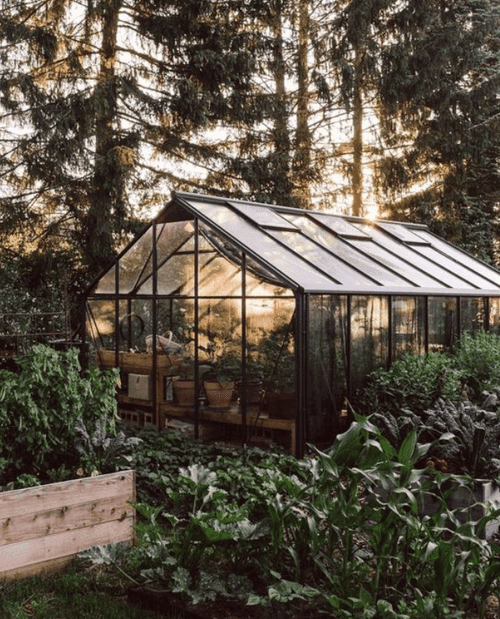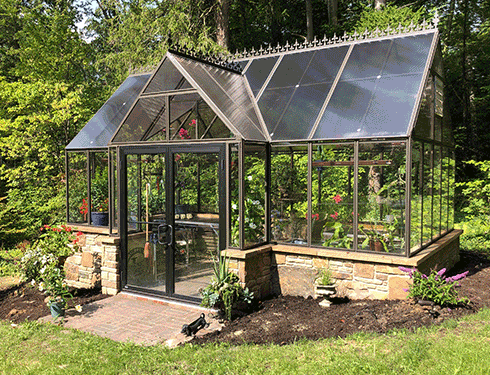Clarifying Top Quality: Monarch Greenhouse Sheds Utah Exceptional Layouts
Wiki Article
The Future of Greenhouses: Technologies in Sustainable Farming
Are you interested about the future of greenhouses and how they are revolutionizing lasting farming? From sophisticated environment control systems to vertical farming methods, water-efficient watering techniques, renewable energy integration, and wise data analytics, these developments are changing the way we expand our food.Advanced Climate Control Solution
To accomplish ideal expanding problems, you can depend on the innovations in greenhouses with sophisticated climate control systems. These systems have transformed the means we grow plants, giving a regulated atmosphere that is conducive to plant growth. With these ingenious systems, you can currently adjust temperature, humidity, light levels, and even CO2 concentrations to create the perfect problems for your plants to thrive.One of the vital functions of these advanced environment control systems is their capability to regulate temperature level. By using sensors and automated controls, the greenhouse can readjust the temperature level based on the specific requirements of the plants. This makes sure that they are never subjected to extreme warm or cool, which can be harmful to their development.
Humidity control is one more crucial aspect of these systems. By keeping the excellent humidity degrees, you can protect against issues such as mold, mold, and condition from affecting your crops. These systems can additionally regulate the quantity of light that reaches the plants, making certain that they obtain the ideal amount for photosynthesis.
Moreover, progressed environment control systems can even manipulate CO2 focus. By increasing the degrees of CO2 in the greenhouse, you can improve plant growth and efficiency. This is especially valuable in areas with reduced natural CO2 degrees.
Upright Farming Methods
One important upright farming strategy is utilizing piled growing systems. Monarch Residential Greenhouse Utah. These systems entail organizing plants in numerous layers, vertically stacked on top of each other. By utilizing upright area, farmers can optimize their plant return without requiring additional land. Piled expanding systems are typically used in city locations where area is limited.One preferred approach is called vertical hydroponics, where plants are expanded in nutrient-rich water without soil. This method is very reliable as it lowers water usage by as much as 90% compared to conventional farming techniques. Furthermore, given that the plants are expanded inside, they are shielded from conditions and parasites, lowering the demand for chemicals.
An additional strategy is aeroponics, which entails putting on hold the plant origins in a haze or air atmosphere. This technique enables for optimal nutrient absorption and oxygenation, leading to faster growth and higher yields. Aeroponics also makes use of much less water than typical farming and can be applied in upright systems, making it a prominent option for vertical farming.
Water-efficient Irrigation Techniques
Taking full advantage of water preservation is vital when it comes to executing water-efficient irrigation techniques in lasting farming. With worldwide water shortage becoming a pushing issue, it is important to create innovative techniques that enhance water usage in greenhouse procedures.One encouraging approach is drip irrigation, which provides water straight to the plant roots, minimizing waste and dissipation. By using a network look at more info of tubes with small emitters, water is applied slowly and precisely, guaranteeing that plants obtain the required wetness without excess drainage.
One more efficient method is the usage of soil dampness sensors. These gadgets measure the dampness content in the dirt and supply real-time data to farmers. By monitoring the soil's dampness degrees, farmers can properly establish when and exactly how much water to apply, preventing over-irrigation.
Additionally, the implementation of rainwater harvesting systems is obtaining popularity in greenhouse agriculture. Gathering rainwater from rooftops and storing it in containers permits farmers to use this natural deposit for irrigation objectives, minimizing dependence on traditional water resources.
Finally, the adoption of automated watering systems can substantially enhance water efficiency. These systems make use of sensors to spot dirt dampness degrees and climate conditions, changing irrigation routines as necessary. By optimizing water usage based on real plant requirements, these systems can minimize water waste and advertise sustainable farming techniques.
Renewable Resource Integration
Sustainable power combination in greenhouses provides a number of benefits, including lowered operating prices and reduced dependence on non-renewable energy sources. The produced power can after that be made use of to run numerous procedures within the greenhouse, such as ventilation, home heating, and lighting systems. These turbines harness wind power and transform it right into electrical energy, which can be made use of to supplement the energy demands of the greenhouse.Smart Information Analytics and Automation
To boost the efficiency of your greenhouse operations and enhance source usage, consider carrying out smart information analytics and automation. Smart information analytics involves accumulating and assessing information from various sensors and gadgets within your greenhouse. By checking variables such as temperature, humidity, light levels, and dirt wetness, you can gain valuable insights right into the health and development of your plants. This data can help you make educated choices regarding readjusting environmental problems, maximizing watering routines, and avoiding potential issues prior to they emerge.
This can include automating the control of illumination, air flow, watering systems, and nutrient distribution. By automating these procedures, you can guarantee that your plants receive the ideal conditions and nutrients at the appropriate time, without the need for consistent hand-operated intervention.
Additionally, wise data analytics and automation can interact synergistically. The data accumulated by sensing units can be utilized to notify automated systems, permitting them to make real-time adjustments based on the current problems. This integration of data analytics and automation can bring about much more efficient and precise resource allowance, eventually causing greater yields and much better plant quality.
Final Thought
To conclude, the future of greenhouses in lasting farming looks appealing. With sophisticated climate control systems, upright farming methods, water-efficient irrigation techniques, and sustainable energy integration, greenhouses are becoming more reliable and ecologically pleasant. Additionally, making use discover this of smart information analytics and automation additionally enhances productivity and decreases waste. These advancements are leading the way for a much more lasting and reliable farming sector, ensuring a greener and much healthier future for all.
By maximizing water usage based on actual plant requirements, these systems can reduce water waste and promote lasting farming methods.

Report this wiki page